This healthy pastry recipe is very easy to make, and uses just 2 everyday ingredients (plus salt and water!). It's gluten free, vegan, and a healthier alternative to traditional shortcrust pastry. It's an ideal healthy pie crust for both sweet and savoury treats.
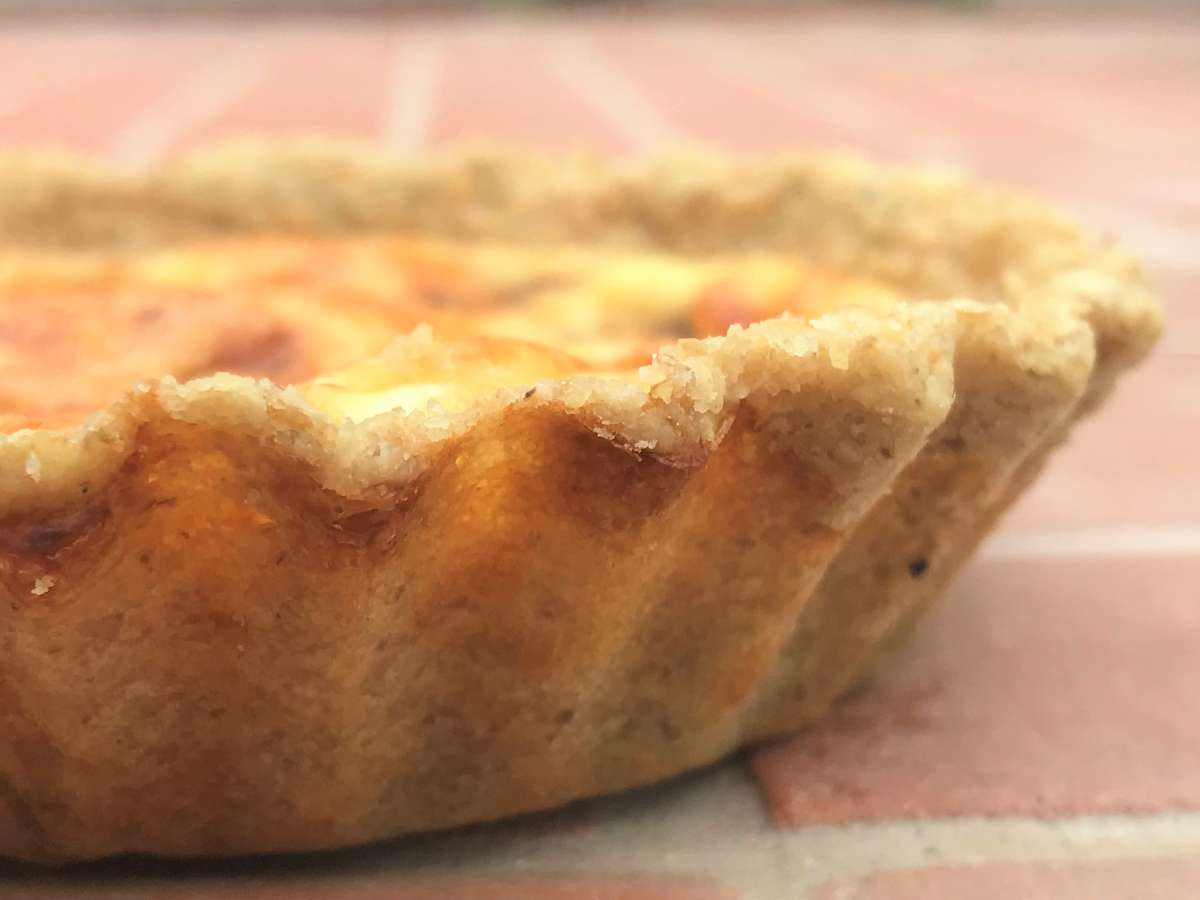
If you're trying to eat healthily, you probably often skip pastry, as it's known to be high in saturated fat and high in empty calories. After all, a lot of recipes can be made without pastry, including this delicious crustless quiche. But sometimes, it's good to have a pie crust. It makes dishes such as these mini cheese and onion tarts much more portable. I also use it for sweet dishes such as this gluten free rhubarb and custard tart. And the slightly crisp and crumbly texture adds a nice contrast to a lot of recipes. So I was determined to find a way of making healthy pastry.
Why is this pastry healthy?
- High in fibre. This healthy pastry recipe is made with whole grain oats rather than wheatflour. Oats are a good source of fibre, including a particular type of heart-healthy soluble fibre called beta glucans
- Gluten free. Provided you buy certified gluten free oats, you'll have gluten free pastry
- Healthy fats. This pastry is made with olive oil rather than butter, so it's much lower in saturated fat. Olive oil has proven health benefits, and of course, it also means that you'll have healthy pastry which is vegan-friendly
- No additives. This simple pastry is made with wholesome ingredients, with no additives and no xanthan gum
Why is it easy?
This olive oil pastry recipe is much easier to make than a conventional shortcrust:
- As you're using a liquid fat, it's very easy to mix the olive oil into the oats. You can skip the traditional process of cutting in butter, and rubbing it in so all the flour is evenly coated
- There's no need to rest oat pastry as there's no gluten to relax
- You don't need to worry about overworking oat pastry (as there's no gluten to toughen up!)
- Oat pastry won't rise, so you don't need to use baking beans if you want to bake your healthy pie crust unfilled. It will stay put, and it won't shrink
Ingredients
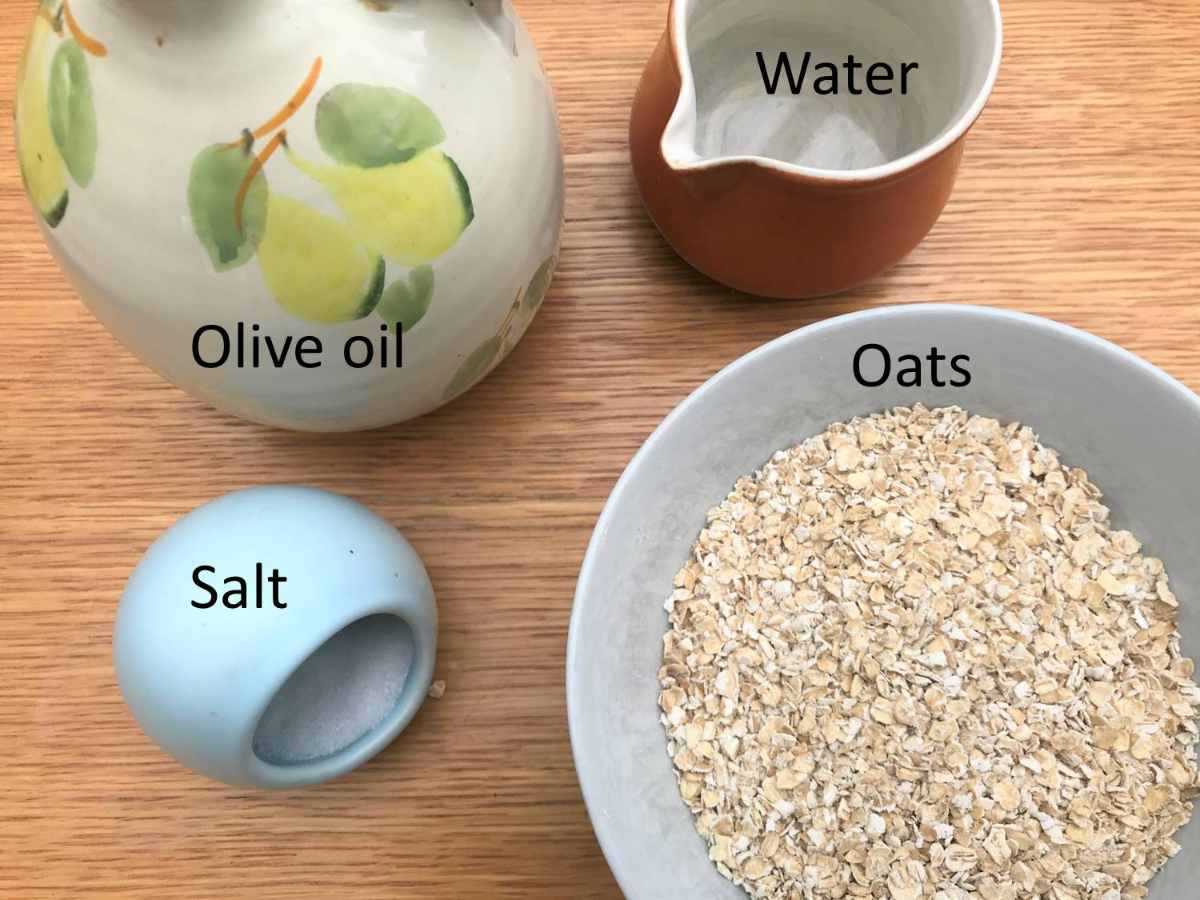
Oats
You'll need porridge or whole oats to make this pastry. If you prefer, you could also use ready-ground oat flour. If you do use oat flour, it will absorb the water slightly differently, so add a little water at a time until the pastry holds together.
Olive oil
I prefer to use extra virgin olive oil as it retains more of the health benefits. However, you could use a different oil if you prefer. If you choose extra virgin coconut oil, you may end up with a slight coconut flavour, so it's better for sweet recipes.
How to make healthy pastry
- Blend the oats in a food processor until finely ground. They won't be as smooth as flour, but this adds a nice rustic texture to the finished pastry.
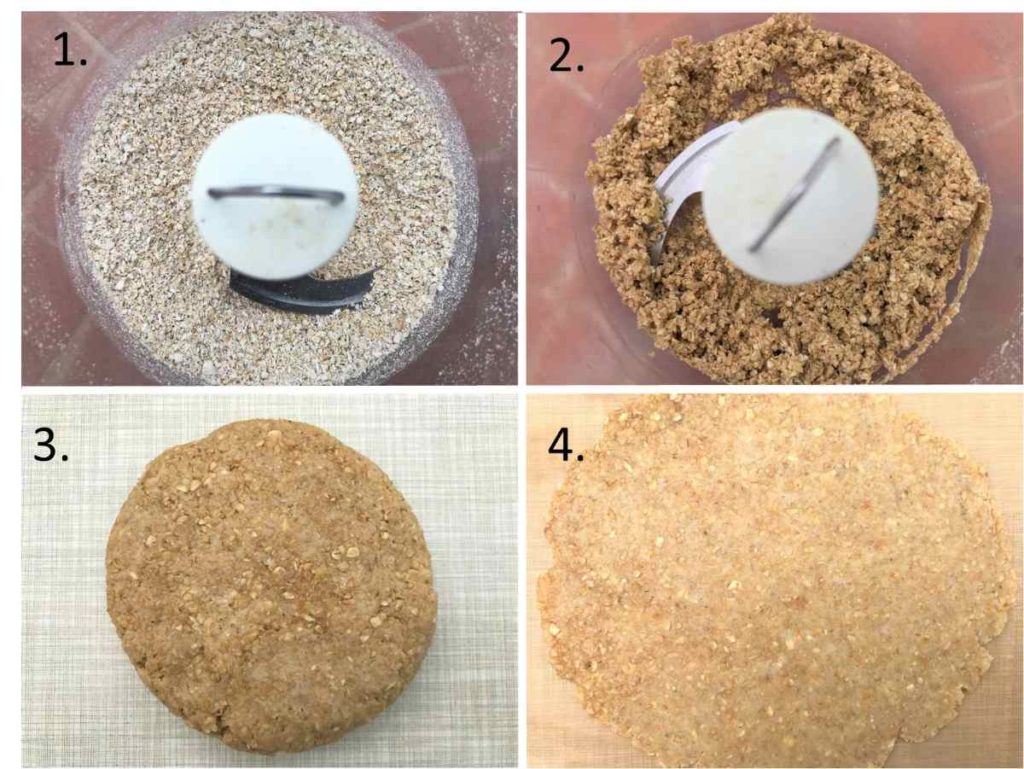
2. Add the salt and olive oil, and blitz until well mixed.
3. Add the water, a little at a time, until the pastry starts to come together. Depending on your oats, you might need slightly more or less water. Use your hands to gather the pastry into a ball.
4. You can either roll out the finished pastry, or use it as a no-roll pastry which you press with your fingers into a pie dish. Either will work, and this olive oil pastry is quite forgiving and sticks back together very easily if it does break. If you chose to use a rolling pin, it's best to roll the pastry between greaseproof/waxed paper or a silicone sheet to stop it sticking. This will also make it easier to transfer the pie crust to your tart tin.
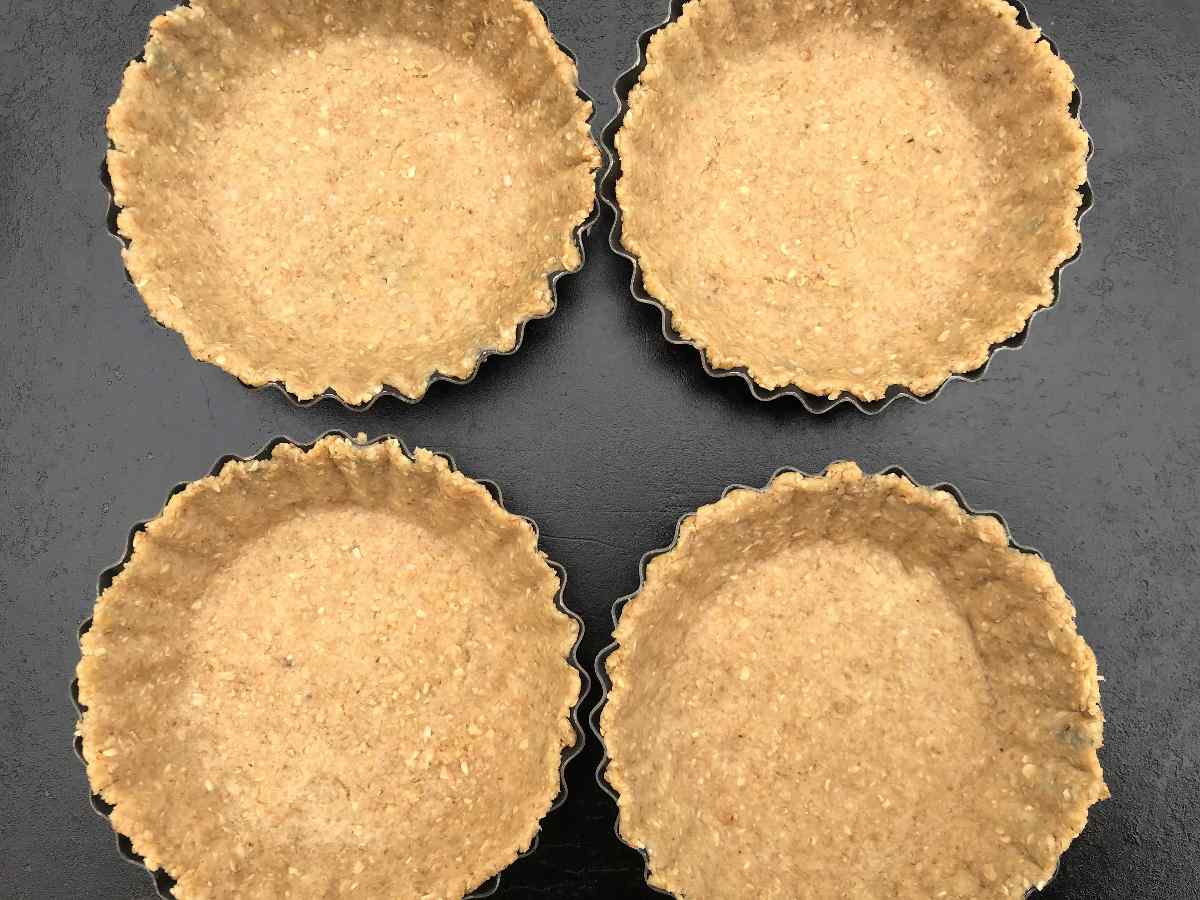
Frequently asked questions
The quantity of healthy pastry in this recipe is enough to line four 10cm individual tart tins. Or you could use it to line a 18cm pie dish.
In total the recipe makes 150g of pastry - that's the weight of the oats, the olive oil and the water combined.
For a 25cm tart tin, use 150g oats, 4.5 tablespoon of olive oil and 3-4 tablespoon water.
It think it's best to pre-bake the pastry case for a crisper result which will hold together better. Just pop it into a preheated oven at 180 degrees for 10 minutes, then add the filling and finish cooking as per your recipe. If you are using a filling that doesn't need cooking, then bake the pie crust for 15-20 minutes. Make sure that you don't over bake the pastry as it'll dry out and become too crumbly.
As with other types of pastry, if possible I think it's best to use a metal tin. If you don't have non-stick tins, you might prefer to very lightly grease the tin so your pie crust comes out more easily. A loose bottom will also make it easier to remove the tart, but it's not essential.
This healthy pastry works well as an alternative to conventional shortcrust. It is suitable for both sweet and savoury recipes.
Yes, you can. You could either use a blender, or if you want to make the pastry by hand, then you'll need to start with oat flour rather than whole oats. Just stir in the olive oil and water until the mix starts to come together, and use your hands to bring the pastry into a ball.
Yes, absolutely. Just wrap it well and store it in the fridge for up to 3 days. You can store it either in a ball or ready-rolled in your pie dish. The cooked pie crust can also be refrigerated for a few days and filled later.
You can also make olive oil pastry with wheat flour if you prefer. It's really easy to make in a few minutes with just a mixing bowl and a fork.
Other recipes you might enjoy
Have you tried this recipe? Please leave a rating and/or comment at the bottom of the page. Your feedback and questions are much appreciated.
You can also follow me on Pinterest and Facebook. Or subscribe to the newsletter to receive delicious healthy recipes straight to your inbox.
Recipe
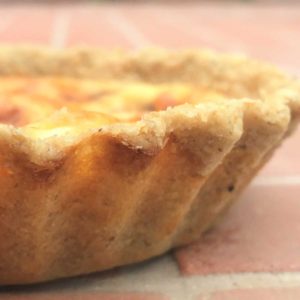
Healthy pastry
Ingredients
- 100 g porridge oats
- 3 tablespoon olive oil ideally extra virgin
- 2-3 tablespoon cold water
- Pinch salt
Instructions
- Place the oats in a food processor and blitz until finely ground. Add the olive oil and salt and blitz again until well mixed.
- Add the water a little at a time, pulsing between each addition. The mixture will start to clump together.
- If you want to roll out the pastry, gather the mixture into a ball. Roll out between two sheets of waxed paper.
- Alternatively, tip the mixture into your tart tin and press it down evenly down with your fingers.
- Bake in a preheated oven at 180 degrees. If you are using an uncooked filling, bake for 15-20 minutes. If you are using a cooked filling, bake the pie crust empty for 10 minutes, then add your filling and bake as per your recipe.
Notes
- Use certified gluten free oats to ensure that your pastry is gluten free.
- If you don't have a food processor or a blender, use oat flour rather than whole oats. Mix the flour, olive oil and salt together, then mix in the water a little at a time until the mixture starts to clump together. Gather into a ball with your hands, and use the pastry as per your recipe.
- If you prefer, you can substitute olive oil for another type of oil.
- This quantity of pastry will line four 10 cm tins, or one 18 cm tin. For a 25 cm tin, use 150 g oats, 4.5 tablespoon of olive oil and 3-4 tablespoon water.
Nutrition
Please note nutritional information is per serving and is provided for guidance only.

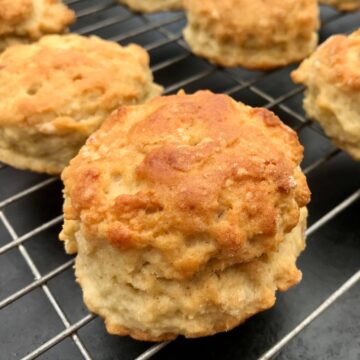
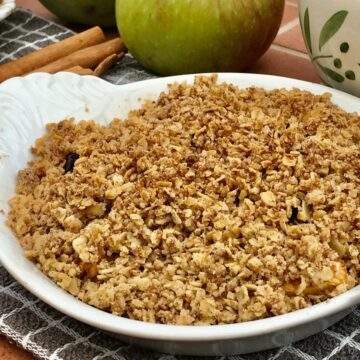
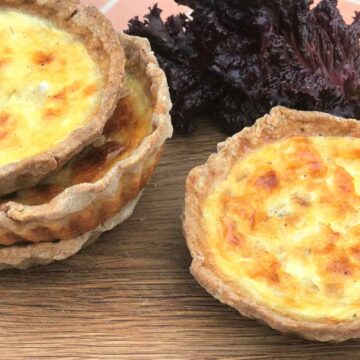
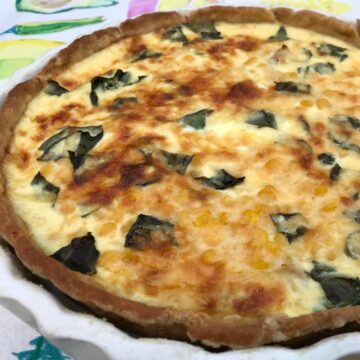

Chris M
When I make wheat flour pastry, I allow time for the pastry to rest before rolling it out for the final pastry case. Does oat flour pastry require rest time?
Wendy Faulkner
Hi Chris. No, you don't need to rest the oat flour pastry. Resting allows the gluten to relax, and there's no gluten in oat flour.
philip rowley
Could be of great interest to people suffering from gall Bladder problems, who have to avoid fatty foods!
Wendy Faulkner
Thank you, yes that's a good thought:) There's still fat in the pastry from the olive oil, but it's much lower in saturated fat.
Susanne Aggerholm
Thank you, it was just the recipe I needed for my carrot pie😁
Wendy
Mmm, that sounds delicious! Enjoy:)